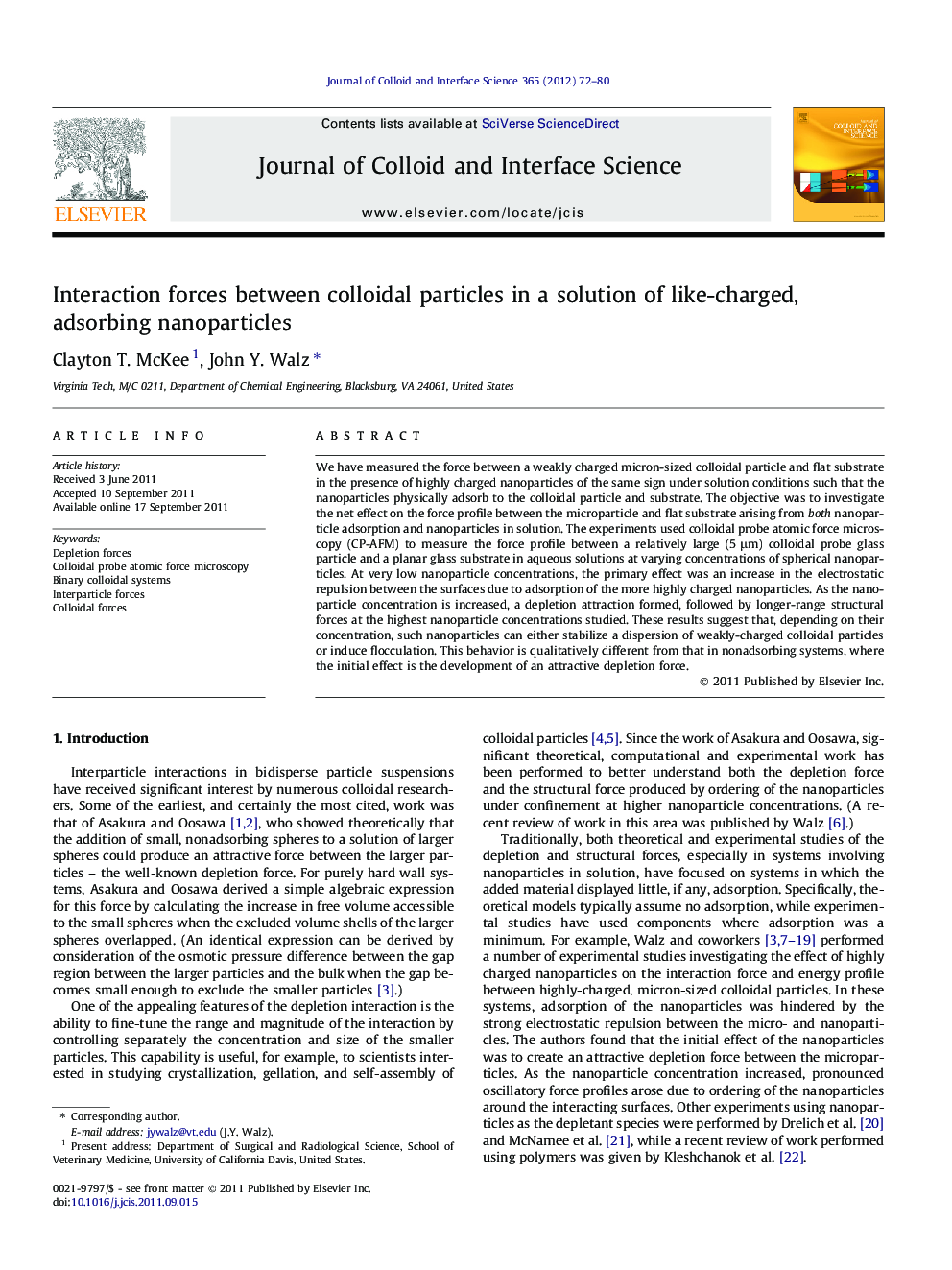| Article ID | Journal | Published Year | Pages | File Type |
|---|---|---|---|---|
| 608451 | Journal of Colloid and Interface Science | 2012 | 9 Pages |
We have measured the force between a weakly charged micron-sized colloidal particle and flat substrate in the presence of highly charged nanoparticles of the same sign under solution conditions such that the nanoparticles physically adsorb to the colloidal particle and substrate. The objective was to investigate the net effect on the force profile between the microparticle and flat substrate arising from both nanoparticle adsorption and nanoparticles in solution. The experiments used colloidal probe atomic force microscopy (CP-AFM) to measure the force profile between a relatively large (5 μm) colloidal probe glass particle and a planar glass substrate in aqueous solutions at varying concentrations of spherical nanoparticles. At very low nanoparticle concentrations, the primary effect was an increase in the electrostatic repulsion between the surfaces due to adsorption of the more highly charged nanoparticles. As the nanoparticle concentration is increased, a depletion attraction formed, followed by longer-range structural forces at the highest nanoparticle concentrations studied. These results suggest that, depending on their concentration, such nanoparticles can either stabilize a dispersion of weakly-charged colloidal particles or induce flocculation. This behavior is qualitatively different from that in nonadsorbing systems, where the initial effect is the development of an attractive depletion force.
Graphical abstractColloidal probe atomic force microscopy was used to measure the force profile between weakly-charged probe particle and substrate in a solution of highly-charged, adsorbing nanoparticles.Figure optionsDownload full-size imageDownload high-quality image (133 K)Download as PowerPoint slideHighlights► Interaction force between weakly-charged microparticle and plate measured using AFM. ► Solution contained highly-charged nanoparticles that adsorb to particle and plate. ► At low nanoparticle concentrations, strong electrostatic repulsion develops. ► At higher nanoparticle, concentrations depletion and structural forces develop. ► Behavior is fundamentally different from nonadsorbing nanparticle systems.
